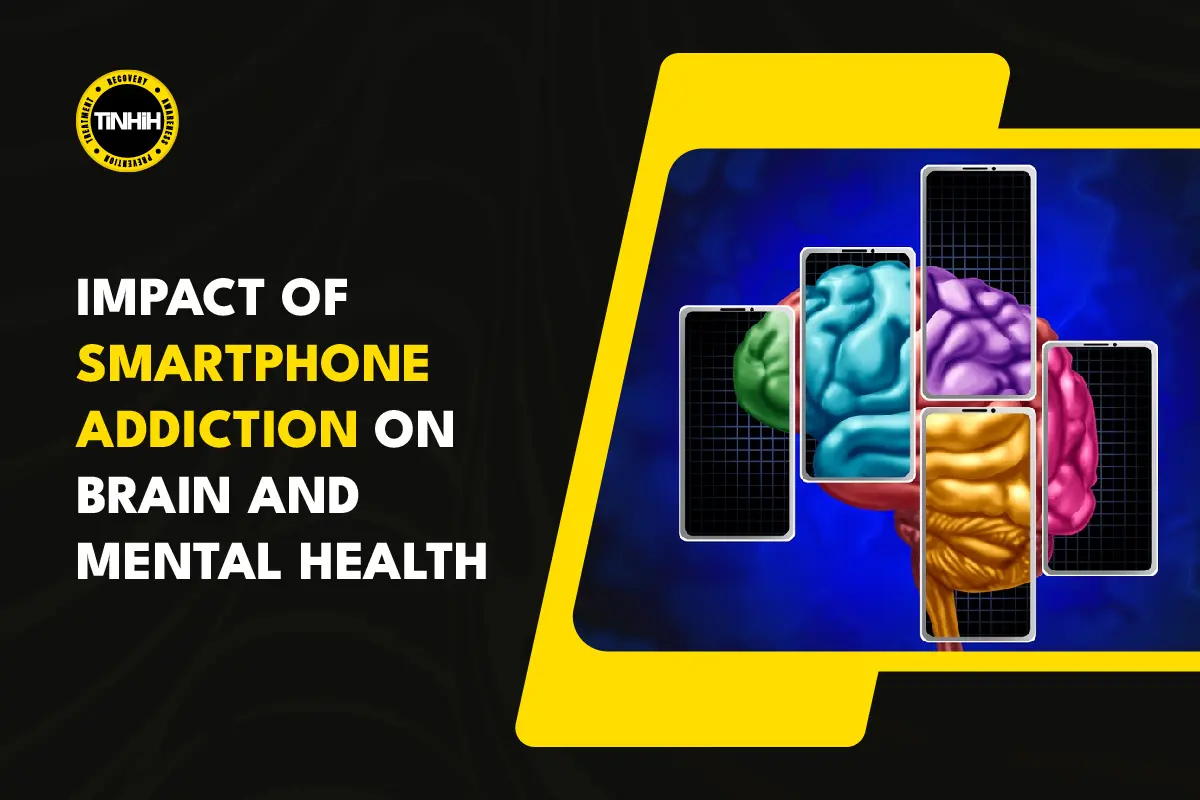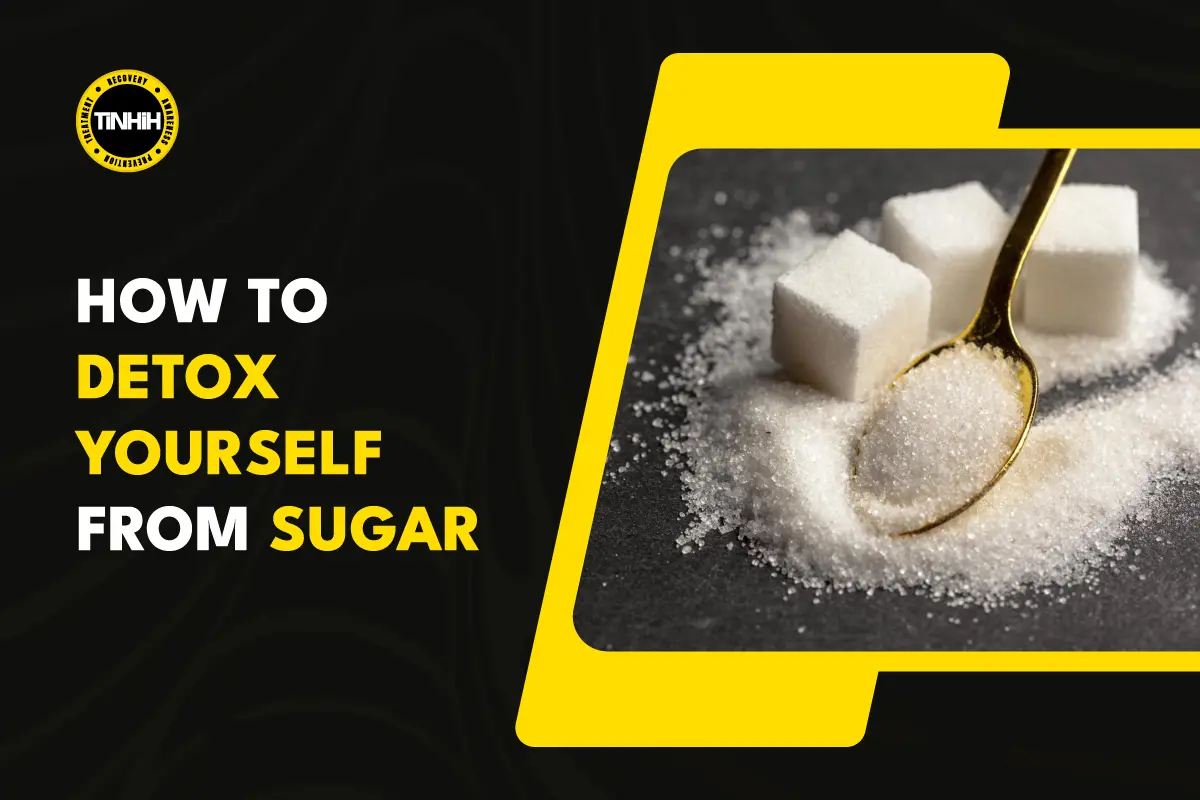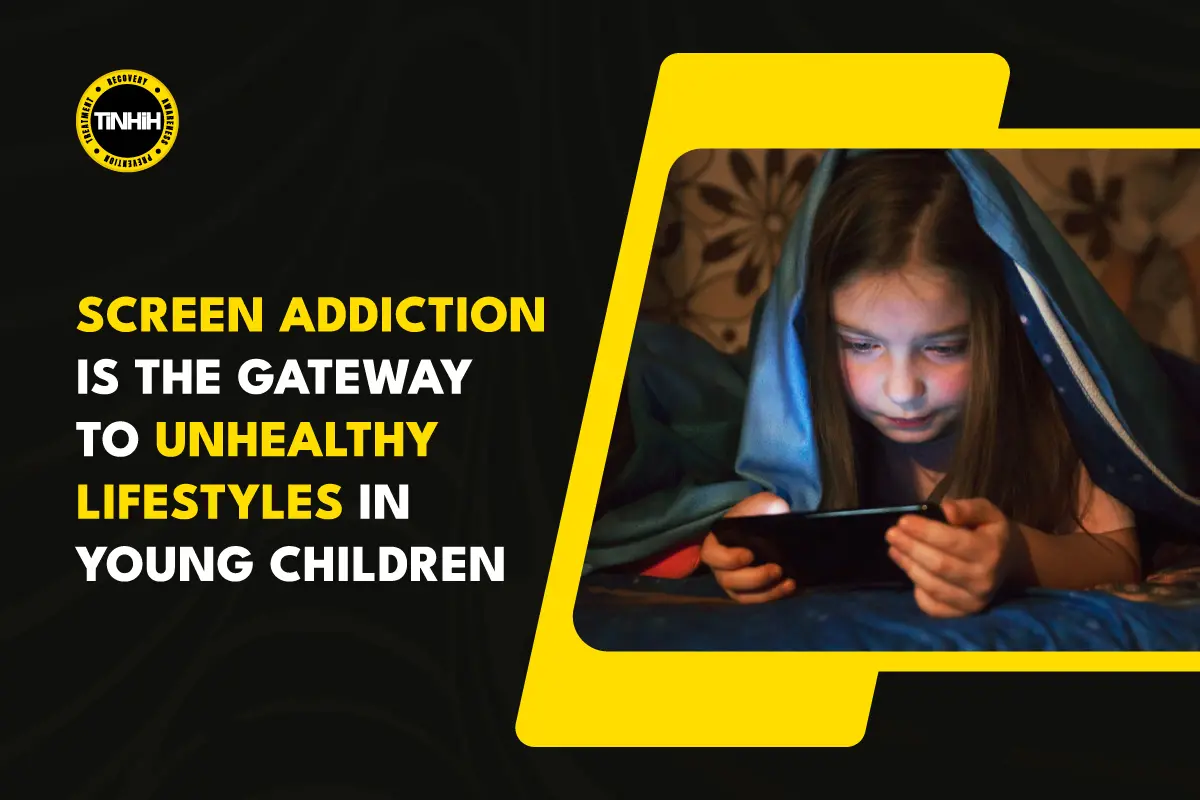
How to Detox Yourself from Sugar: 7-Day Guide

Sugar, while often indulged in for its sweet taste, can have detrimental effects on our health when consumed in excess. From contributing to weight gain and obesity to increasing the risk of chronic diseases like diabetes and heart disease, the impact of sugar on our well-being cannot be overstated.
Excessive sugar intake has also been linked to inflammation, reduced immune function, and even mental health issues such as anxiety and depression. Furthermore, sugar can be addictive, leading to cravings and a cycle of dependency that can be difficult to break.
Table of Contents
Benefits of Sugar Detox
Embarking on a sugar detox journey can offer a myriad of benefits for both our physical and mental health. By reducing or eliminating added sugars from our diet, we give our bodies a chance to reset and rebalance. Some of the key benefits of a sugar detox include:
- Weight Loss or Management: Cutting out sugar can lead to a decrease in calorie intake and help regulate appetite, leading to potential weight loss or easier weight maintenance.
- Improved Energy Levels: Relying less on sugar for energy can result in more stable energy levels throughout the day, reducing energy crashes and fatigue.
- Better Overall Health: Lowering sugar intake can lower the risk of chronic diseases such as diabetes, heart disease, and certain cancers, as well as improve markers of inflammation and immune function.
- Clearer Skin: Excess sugar consumption has been linked to skin issues such as acne and premature aging. Eliminating sugar can lead to clearer, healthier-looking skin.
- Enhanced Mental Clarity: Stable blood sugar levels can improve cognitive function and mood, leading to increased mental clarity and decreased feelings of anxiety or depression.
Day 1: Preparation Phase
Understanding Hidden Sugars
Before embarking on your sugar detox journey, it’s crucial to understand that sugar can hide in many unexpected places, not just in obvious sources like candy and soda. Hidden sugars can lurk in seemingly healthy foods such as flavored yogurt, granola bars, salad dressings, and even savory items like bread and condiments.
Take some time on Day 1 to educate yourself about common sources of hidden sugars by reading food labels carefully and familiarizing yourself with alternative names for sugar, such as high fructose corn syrup, dextrose, and maltose.
Clearing Out Your Pantry
To set yourself up for success during your sugar detox, it’s essential to rid your pantry and fridge of any tempting sugary treats and processed foods that may derail your efforts. Take inventory of your kitchen and identify items that contain added sugars or unhealthy ingredients.
Donate unopened items to a local food bank or shelter, and discard any expired or open products. Replace these items with whole, unprocessed foods such as fruits, vegetables, lean proteins, nuts, seeds, and whole grains, which will serve as the foundation of your sugar detox-friendly meals and snacks.
Meal Planning for the Week
Meal planning is a key component of any successful dietary change, including a sugar detox. Take some time on Day 1 to plan out your meals and snacks for the week ahead, ensuring that they are balanced, nutritious, and free from added sugars.
Focus on incorporating whole foods such as vegetables, fruits, lean proteins, and healthy fats into each meal, and aim to include a variety of flavors and textures to keep things interesting.
Consider batch cooking and meal prepping to save time during the week and prevent the temptation to reach for unhealthy convenience foods when hunger strikes.
Setting Realistic Goals
As you embark on your sugar detox journey, it’s essential to set realistic goals that align with your individual needs, preferences, and lifestyle. Reflect on why you want to reduce your sugar intake and what you hope to achieve by doing so, whether it’s weight loss, improved energy levels, better overall health, or simply breaking free from sugar cravings.
Be specific about your goals, breaking them down into smaller, actionable steps that you can track and measure over time. Remember that progress may not always be linear, and setbacks are a natural part of the process. Be kind to yourself and celebrate your achievements, no matter how small they may seem.
Day 2: Starting Strong
Hydration: Importance and Tips
Hydration plays a crucial role in overall health and can support your sugar detox efforts. Drinking an adequate amount of water throughout the day helps flush toxins from your body, aids in digestion, and keeps your energy levels up.
Aim to drink at least 8-10 glasses of water each day, and consider carrying a reusable water bottle with you to stay hydrated on the go. If you struggle to drink plain water, try infusing it with fresh fruits, herbs, or cucumbers for added flavor.
Herbal teas and sparkling water are also great options for staying hydrated without added sugars or artificial sweeteners.
Balanced Breakfast Ideas
Starting your day with a balanced breakfast sets the tone for healthy eating habits throughout the day and can help prevent sugar cravings later on. Focus on incorporating a mix of protein, healthy fats, and complex carbohydrates into your morning meal to keep you feeling satisfied and energized. Some sugar detox-friendly breakfast ideas include:
- Greek yogurt with berries and almonds
- Scrambled eggs with spinach and avocado
- Overnight oats made with rolled oats, chia seeds, almond milk, and sliced fruit
- Whole grain toast topped with mashed avocado and sliced tomato
- Smoothie made with spinach, frozen berries, unsweetened almond milk, and protein powder
Snack Swaps: Healthy Alternatives
Snacking can be a pitfall for many people during a sugar detox, but choosing nutrient-dense snacks can help satisfy hunger and prevent cravings without derailing your progress. Instead of reaching for sugary snacks like candy bars or cookies, opt for healthier alternatives that provide a mix of protein, fiber, and healthy fats. Some sugar detox-friendly snack ideas include:
- Sliced vegetables with hummus
- Apple slices with almond butter
- Hard-boiled eggs
- Trail mix made with nuts, seeds, and dried fruit (in moderation)
- Plain popcorn sprinkled with nutritional yeast or spices
Mindful Eating Practices
Practicing mindfulness during meals and snacks can help you tune into your body’s hunger and fullness cues, making it easier to make nourishing choices and avoid mindless eating. Take time to savor each bite, paying attention to the flavors, textures, and sensations of the food.
Avoid distractions such as watching TV or scrolling on your phone while eating, as this can lead to overeating and less enjoyment of your meals. Listen to your body and eat when you’re hungry, stopping when you’re satisfied, rather than when your plate is empty.
By practicing mindful eating, you can foster a healthier relationship with food and better support your sugar detox journey.
Day 3: Overcoming Cravings
Identifying Triggers
Understanding what triggers your sugar cravings is a crucial step in overcoming them during your sugar detox. Common triggers may include stress, boredom, emotions, certain times of day, or environmental cues such as seeing sugary foods or being in social situations where sweets are present.
Take some time on Day 3 to reflect on your own personal triggers and jot them down in a journal. By identifying your triggers, you can develop strategies to address them proactively and find healthier ways to cope without turning to sugary treats.
Healthy Snack Options
Having healthy snack options on hand can help you satisfy cravings and prevent overindulging in sugary treats. Choose snacks that are high in protein, fiber, and healthy fats to keep you feeling full and satisfied between meals. Some sugar detox-friendly snack options include:
- Greek yogurt with mixed berries
- Cottage cheese with sliced fruit
- Raw vegetables with guacamole or hummus
- Nuts and seeds
- Rice cakes with almond butter
- Homemade kale chips
- Chia seed pudding
Incorporating Protein and Fiber
Incorporating protein and fiber into your meals and snacks can help stabilize blood sugar levels and reduce cravings for sugary foods. Protein-rich foods such as lean meats, poultry, fish, eggs, tofu, and legumes can help keep you feeling full and satisfied, while fiber-rich foods such as fruits, vegetables, whole grains, and nuts can aid in digestion and promote satiety. Aim to include a source of protein and fiber in each meal and snack to help curb cravings and maintain energy levels throughout the day.
Mindful Eating Strategies
Practicing mindful eating can help you become more aware of your cravings and make conscious choices about how to respond to them. When you feel a craving coming on, take a moment to pause and check in with yourself.
Ask yourself if you’re truly hungry or if there’s something else going on, such as stress or boredom, that may be driving the craving. If you’re genuinely hungry, choose a healthy snack that will nourish your body and satisfy your hunger.
If the craving is more emotional or environmental, try engaging in a non-food-related activity such as going for a walk, practicing deep breathing exercises, or calling a friend for support. By practicing mindfulness, you can gain greater control over your cravings and stay on track with your sugar detox goals.
Day 4: Energizing Workouts
Benefits of Exercise During Detox
Incorporating exercise into your sugar detox plan offers numerous benefits for both your physical and mental well-being. Exercise helps to boost metabolism, burn calories, and support weight loss or maintenance, which can complement your efforts to reduce sugar intake.
Physical activity also promotes the release of endorphins, neurotransmitters that help reduce stress and improve mood, making it easier to cope with cravings and stay motivated during your detox.
Additionally, exercise can enhance energy levels, improve sleep quality, and increase overall feelings of vitality, helping you feel more energized and focused throughout the day.
Suitable Exercise Routines
When choosing exercise routines during your sugar detox, focus on activities that you enjoy and that align with your fitness level and preferences. Aim for a mix of cardiovascular exercise, strength training, and flexibility exercises to achieve a well-rounded fitness routine. Some suitable exercise options for your sugar detox journey include:
- Brisk walking or jogging
- Cycling or stationary biking
- Swimming or water aerobics
- Dance-based workouts
- Yoga or Pilates
- Bodyweight exercises such as squats, lunges, push-ups, and planks
- High-intensity interval training (HIIT) workouts
- Group fitness classes such as Zumba, spin, or boot camp
Choose activities that you can easily incorporate into your daily routine and that you find enjoyable and sustainable in the long term. Aim for at least 30 minutes of moderate-intensity exercise most days of the week, but listen to your body and adjust your workout intensity and duration as needed.
Post-Workout Nutrition Tips
After completing your workout, it’s important to refuel your body with nutrient-rich foods to support muscle recovery and replenish energy stores. Aim to consume a combination of carbohydrates and protein within 30 minutes to an hour post-exercise to optimize recovery. Some post-workout nutrition tips include:
- Hydrate with water or a sports drink to replace lost fluids and electrolytes.
- Incorporate lean protein sources such as grilled chicken, tofu, or Greek yogurt to support muscle repair and growth.
- Include carbohydrates such as whole grains, fruits, or vegetables to replenish glycogen stores and provide energy for future workouts.
- Add healthy fats from sources such as nuts, seeds, or avocado to promote satiety and enhance nutrient absorption.
Staying Motivated
Staying motivated to exercise during your sugar detox can be challenging, especially when faced with cravings or fatigue. To stay motivated, remind yourself of the reasons why you started your detox journey in the first place and the benefits that regular exercise can bring to your health and well-being.
Set realistic goals for your workouts, whether it’s increasing your workout duration, improving your fitness level, or simply making exercise a regular part of your routine. Find a workout buddy or join a fitness class to stay accountable and motivated, and vary your workouts to keep things interesting and prevent boredom.
Remember to celebrate your progress and accomplishments along the way, no matter how small, and be kind to yourself if you experience setbacks. By staying committed and consistent with your exercise routine, you can maximize the benefits of your sugar detox and enhance your overall health and vitality.
Day 5: Nourishing Your Body
Importance of Whole Foods
Whole foods are foods that are minimally processed and as close to their natural state as possible. They are rich in essential nutrients such as vitamins, minerals, fiber, and antioxidants, which are vital for optimal health and well-being.
Incorporating whole foods into your diet during your sugar detox provides your body with the nourishment it needs to thrive and supports your efforts to reduce sugar intake. Whole foods are also typically lower in added sugars and unhealthy fats than processed foods, making them a healthier choice for overall health and weight management.
By prioritizing whole foods such as fruits, vegetables, whole grains, lean proteins, and healthy fats, you can fuel your body with nutrient-dense foods that promote vitality and longevity.
Nutrient-Rich Meal Ideas
When planning your meals during your sugar detox, focus on incorporating a variety of nutrient-rich whole foods to ensure that you’re meeting your body’s nutritional needs. Some nutrient-rich meal ideas to consider include:
- Grilled salmon with quinoa and roasted vegetables
- Stir-fried tofu with broccoli, bell peppers, and brown rice
- Spinach and feta omelet with whole-grain toast
- Chickpea and vegetable curry served over cauliflower rice
- Turkey and avocado wrap with a side salad
- Lentil soup with mixed greens and whole-grain crackers
- Grilled chicken salad with mixed greens, cherry tomatoes, cucumber, and balsamic vinaigrette
- Vegetable stir-fry with tofu or shrimp and a side of steamed edamame
Be creative and experiment with different flavor combinations and cooking techniques to keep your meals interesting and satisfying. Aim to include a variety of colors, textures, and flavors in each meal to ensure that you’re getting a diverse range of nutrients.
Cooking at Home vs. Eating Out
During your sugar detox, you may find it easier to control your sugar intake by cooking at home rather than eating out. When you prepare meals at home, you have full control over the ingredients and cooking methods used, allowing you to make healthier choices and avoid hidden sugars and unhealthy fats.
Additionally, cooking at home can save you money and time, as well as provide opportunities for bonding with family or friends over shared meals. However, if you do choose to eat out during your detox, opt for restaurants that offer healthier options such as salads, grilled proteins, and vegetable-based dishes.
Be mindful of portion sizes and avoid dishes high in added sugars, refined carbohydrates, and unhealthy fats. Remember that it’s okay to indulge occasionally, but aim to make the majority of your meals at home using whole, minimally processed ingredients.
Mindful Eating Practices
Practicing mindful eating during your sugar detox can help you develop a healthier relationship with food and make more conscious choices about what and how much you eat.
Mindful eating involves paying attention to your body’s hunger and fullness cues, as well as the flavors, textures, and sensations of the food you’re eating. Some mindful eating practices to incorporate into your daily routine include:
- Eating slowly and savoring each bite
- Paying attention to feelings of hunger and fullness
- Avoiding distractions such as TV, phones, or computers while eating
- Listening to your body and eating only when you’re truly hungry
- Being mindful of portion sizes and avoiding overeating
- Noticing how different foods make you feel physically and emotionally
By practicing mindful eating, you can become more attuned to your body’s needs and preferences and make more informed choices about the foods you eat, ultimately supporting your sugar detox goals and promoting overall health and well-being.
Day 6: Managing Stress
Understanding the Sugar-Stress Connection
Stress and sugar consumption often go hand in hand, forming a complex relationship that can impact both physical and mental health. When we experience stress, our bodies release hormones such as cortisol and adrenaline, which can trigger cravings for sugary and high-fat foods as a coping mechanism.
These foods may provide temporary relief from stress by triggering the release of feel-good neurotransmitters like serotonin, but they ultimately contribute to a cycle of emotional eating and unhealthy habits.
Additionally, excessive sugar consumption can exacerbate stress by leading to fluctuations in blood sugar levels, energy crashes, and increased inflammation in the body.
By understanding the link between stress and sugar consumption, you can develop strategies to manage stress more effectively and reduce reliance on sugary foods as a coping mechanism.
Stress-Relief Techniques
Managing stress is essential for overall health and well-being, especially during a sugar detox when cravings and emotions may be heightened. Incorporating stress-relief techniques into your daily routine can help you cope with stress more effectively and reduce the likelihood of turning to sugar for comfort. Some stress-relief techniques to consider include:
- Deep Breathing Exercises: Practice deep breathing exercises to activate the body’s relaxation response and calm the mind.
- Meditation or Mindfulness: Set aside time each day to practice meditation or mindfulness, focusing on the present moment and cultivating a sense of inner peace.
- Physical Activity: Engage in regular physical activity such as walking, jogging, yoga, or dancing to release tension and boost mood-enhancing endorphins.
- Journaling: Keep a journal to express your thoughts, feelings, and emotions, allowing yourself to process and release stress healthily.
- Spending Time in Nature: Spend time outdoors in nature, whether it’s going for a hike, gardening, or simply enjoying a walk in the park, to reconnect with the natural world and reduce stress levels.
Herbal Teas and Relaxation Methods
Herbal teas and relaxation methods can provide soothing relief from stress and help promote relaxation and calmness during your sugar detox. Consider incorporating herbal teas such as chamomile, peppermint, lavender, or lemon balm into your daily routine to unwind and de-stress.
Experiment with relaxation methods such as progressive muscle relaxation, guided imagery, or aromatherapy to create a calming atmosphere and promote relaxation. Set aside time each day to enjoy a cup of herbal tea and engage in relaxation techniques to support your stress management efforts and enhance your overall well-being.
Prioritizing Self-Care
Prioritizing self-care is essential for managing stress and maintaining balance during your sugar detox. Self-care involves taking intentional actions to nurture your physical, mental, and emotional health and prioritize your well-being. Some self-care practices to incorporate into your daily routine include:
- Getting Adequate Sleep: Aim for 7-9 hours of quality sleep each night to support overall health and reduce stress levels.
- Eating Nourishing Foods: Fuel your body with nutrient-dense foods that provide sustained energy and support optimal health and vitality.
- Setting Boundaries: Establish healthy boundaries to protect your time, energy, and emotional well-being, and learn to say no to commitments that drain you.
- Practicing Self-compassion: Be kind to yourself and practice self-compassion, recognizing that you’re doing the best you can and that it’s okay to make mistakes or have setbacks.
- Engaging in Activities You Enjoy: Make time for activities that bring you joy and fulfillment, whether it’s reading, painting, spending time with loved ones, or pursuing hobbies and interests.
By prioritizing self-care and implementing stress-relief techniques into your daily routine, you can effectively manage stress and support your sugar detox goals, ultimately enhancing your overall health and well-being.
Day 7: Reflection and Maintenance
Reflecting on Progress
As you reach the final day of your sugar detox journey, take some time to reflect on the progress you’ve made and the changes you’ve experienced throughout the week. Consider how your eating habits, energy levels, mood, and overall well-being have shifted since beginning the detox.
Celebrate any victories, no matter how small, and acknowledge any challenges you may have faced along the way. Reflecting on your progress can help you gain valuable insights into your relationship with sugar and identify areas for continued growth and improvement.
Setting Long-Term Goals
Looking beyond the end of your sugar detox, take the opportunity to set long-term goals for your health and well-being. Consider what you hope to achieve in the weeks, months, and years ahead, whether it’s maintaining a lower sugar intake, adopting healthier eating habits, achieving a specific fitness goal, or improving your overall quality of life.
Set SMART goals that are specific, measurable, achievable, relevant, and time-bound, and break them down into smaller, actionable steps that you can work towards each day. By setting long-term goals, you can stay focused and motivated to continue making positive changes to support your health and happiness.
Incorporating Moderation
As you transition out of your sugar detox and back into your routine, aim to incorporate moderation into your approach to eating. While it’s important to be mindful of your sugar intake and limit your consumption of sugary foods and beverages, it’s also essential to allow yourself the flexibility to enjoy treats occasionally without guilt or restriction.
Practice mindful eating and listen to your body’s hunger and fullness cues, allowing yourself to indulge in moderation when you truly crave something sweet. By finding a balance between nourishing your body with nutrient-dense foods and enjoying occasional treats in moderation, you can maintain a healthy and sustainable approach to eating for the long term.
Celebrating Achievements
As you complete your sugar detox journey, take the time to celebrate your achievements and acknowledge the hard work and dedication you’ve put in over the past week. Whether you’ve successfully reduced your sugar intake, overcome cravings, or adopted healthier habits, each achievement is worth celebrating. Treat yourself to a reward or indulge in a self-care activity that brings you joy and relaxation.
Share your accomplishments with friends and family, and bask in the sense of pride and accomplishment that comes from taking control of your health and well-being. By celebrating your achievements, you can boost your confidence, reinforce positive behaviors, and set yourself up for continued success in your journey toward optimal health and vitality.
Symptoms of Sugar Detox
This journey can lead to various physical and emotional changes as your body adjusts to a reduced intake of sugar. While the ultimate goal is to improve overall health and well-being, the initial stages of sugar detox can sometimes be challenging. Understanding the symptoms of sugar detox can help you navigate through this process more effectively.
Headaches
One of the most common symptoms experienced during sugar detox is headaches. As your body withdraws from the constant influx of sugar, it may react by causing headaches. These headaches can range from mild to severe and may last for several days as your body adjusts to the change in diet.
Fatigue
Feeling tired or fatigued is another typical symptom of sugar detox. Without the quick energy boost provided by sugar, your body may initially struggle to maintain energy levels. This fatigue can be exacerbated by disrupted sleep patterns as your body adjusts to the changes in your diet.
Cravings
Cravings for sugary foods can intensify during the initial stages of sugar detox. Your body may crave the dopamine rush that sugar provides, leading to intense cravings for sweets and other high-sugar foods. Managing these cravings is a crucial aspect of successfully completing a sugar detox.
Mood Swings
Fluctuations in mood are common during sugar detox. The sudden decrease in sugar intake can affect neurotransmitter levels in the brain, leading to mood swings, irritability, and even feelings of anxiety or depression. Being aware of these changes in mood can help you cope effectively during the detox process.
Digestive Issues
Changes in diet, including reducing sugar intake, can impact digestion. Some people may experience digestive issues such as bloating, gas, constipation, or diarrhea during sugar detox. These symptoms are usually temporary and should improve as your body adjusts to the new dietary habits.
Muscle Aches
Muscle aches and pains are another potential symptom of sugar detox. Some individuals may experience muscle stiffness or soreness as their bodies adapt to the absence of sugar. Staying hydrated and engaging in light physical activity can help alleviate these symptoms.
Brain Fog
Difficulty concentrating or experiencing brain fog is common during sugar detox. The brain relies on glucose for energy, and sudden changes in sugar intake can temporarily disrupt cognitive function. As your body adjusts to using alternative sources of energy, these symptoms should gradually improve.
Frequently Asked Question
How Long Does it Take to Detox from Sugar?
The time it takes to detox from sugar can vary depending on several factors, including individual metabolism, current sugar intake, and overall health status.
Typically, the initial withdrawal symptoms, such as cravings and mood swings, can last anywhere from a few days to a couple of weeks as your body adjusts to lower sugar levels.
However, it may take several weeks or even months to fully overcome sugar cravings and establish healthier eating habits. Consistently avoiding high-sugar foods and beverages, staying hydrated, and consuming nutrient-dense foods can help speed up the detox process and support overall health and well-being.
It’s essential to consult with a healthcare professional before making significant dietary changes, especially if you have any underlying health conditions.
Can Sugar Detox Cause Headaches?
Yes, sugar detox can indeed cause headaches as one of the withdrawal symptoms. When you significantly reduce your sugar intake, especially if you’ve been consuming high amounts of sugar regularly, your body may experience withdrawal symptoms as it adjusts to the change.
Headaches are a common symptom of sugar detox and can occur due to various reasons, including changes in blood sugar levels, altered brain chemistry, and dehydration.
Can I Eat Fruit on Sugar Detox?
Yes, you can eat fruit during a sugar detox, but it’s important to be mindful of the types and amounts of fruit you consume. While fruit contains natural sugars, it also provides essential nutrients like vitamins, minerals, and fiber, which are beneficial for overall health.
During a sugar detox, it’s advisable to focus on consuming whole fruits rather than processed or sugary fruit products like fruit juices or canned fruits in syrup. Whole fruits contain fiber, which helps slow down the absorption of sugar into the bloodstream, preventing spikes in blood sugar levels.
Conclusion
Embarking on a sugar detox journey is a significant step towards reclaiming control over your health and well-being, but it’s just the beginning of a lifelong journey towards optimal wellness. As you continue on your path, remember to be patient and kind to yourself. Progress may not always be linear, and setbacks are a natural part of the process.
Stay committed to your goals, and don’t hesitate to reach out for support when needed. With dedication and perseverance, you can achieve lasting change and live a happier, healthier life. As you conclude your sugar detox journey, remember that you have the power to transform your health and create the life you desire.
Every small step you take towards prioritizing your well-being is a step in the right direction. Trust in your ability to overcome challenges embrace change, and never underestimate the impact that even the smallest actions can have on your health and happiness.
You are capable of achieving incredible things, and your journey towards optimal wellness is a journey worth embarking on. Stay committed, stay positive, and remember that you are worth the effort. Here’s to your continued success and a lifetime of vibrant health and vitality.





